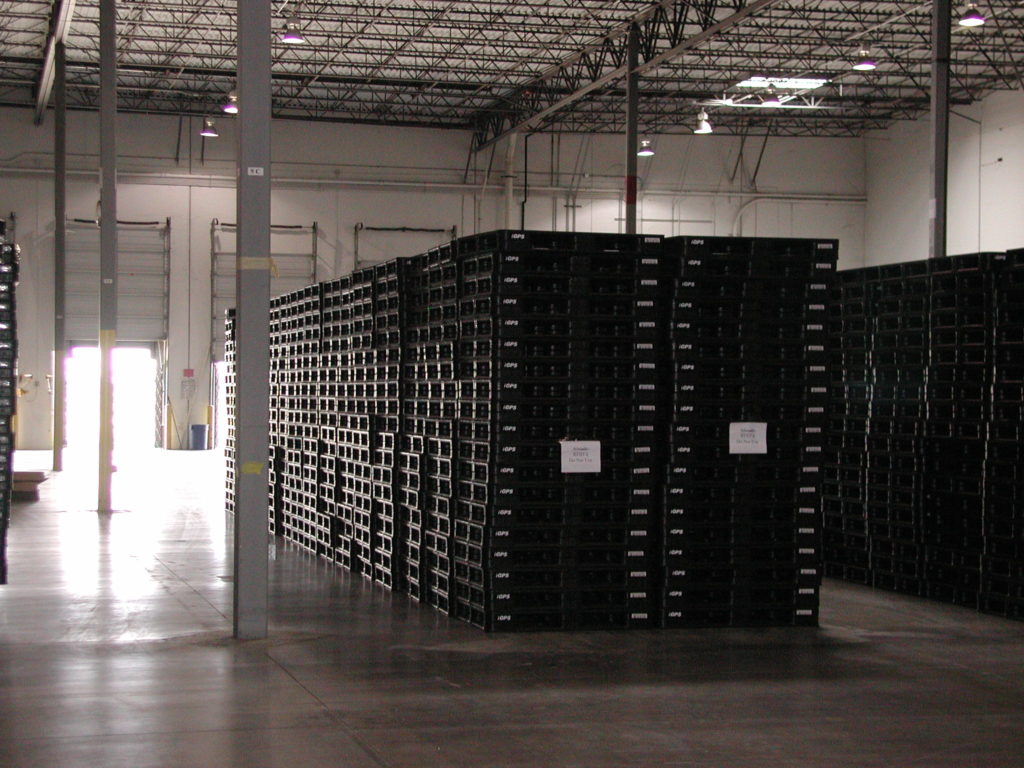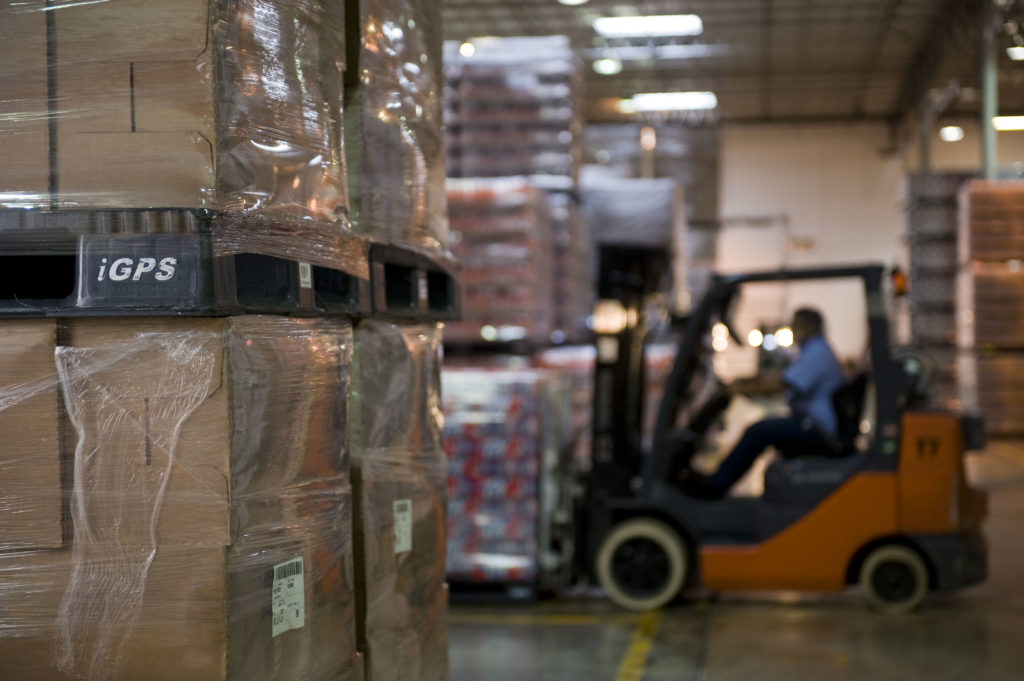Logistics coordinators are the great unsung heroes of the modern world. Without their work constantly managing the supply chain to ensure that products are delivered on time, we’d go without the necessities of daily life like fresh food, medicine, toiletries, and a million other things that keep us in good health. We quite literally owe every convenience of the modern world to the tireless efforts of logistics coordinators, warehouse managers, and others whose jobs are to compare inventories and juggle delivery timetables in order to get goods to market in a timely manner at the lowest possible cost.
The task isn’t an easy one. Every link in the supply chain is vulnerable to interruptions. Food production can be halted by natural events–like a severe freeze in Florida reducing the orange crop–or by an accident in the warehouse that brings the flow of products to a halt. A logistics manager must account for and have a plan to deal with every variable. While the task will never be easy, some inventory management techniques can help make the logistics supply chain more flexible and the job of logistics managers more manageable while also trimming costs.
Improved Tracking As an Inventory Management Technique
The first step to improving inventory management is determining a concrete operational baseline to improve on. Collecting data about your current operations and organizing it in a clearly decipherable way can give you a baseline for improving those operations. For example, in order to reduce shipping errors, you’ll first need to collect information on how many shipments are misdirected and determine why.
Good data tracking over time makes it easy to determine your current baseline, set goals for improvement, and evaluate Key Performance Indicators (KPIs).
Once you’re able to track and store information about products as they make their way through the supply chain, you can begin to build a database that may be used to justify new procedures. Good data tracking over time makes it easy to determine your current baseline, set goals for improvement, and evaluate Key Performance Indicators (KPIs). Without this type of tracking, pinpointing your company’s procedural missteps involves much more guesswork.
The Advantages of Tracking Inventory
 The technology to enable package tracking already exists. If you’ve ever gone to your local grocery store and seen a stocker scanning items before placing them on the shelf then you’re familiar with this inventory management technique. If you’ve ever used a self-checkout, then you’ve actually participated in it. A similar system can be implemented across the supply chain as the technology and standards for doing so already exist.
The technology to enable package tracking already exists. If you’ve ever gone to your local grocery store and seen a stocker scanning items before placing them on the shelf then you’re familiar with this inventory management technique. If you’ve ever used a self-checkout, then you’ve actually participated in it. A similar system can be implemented across the supply chain as the technology and standards for doing so already exist.
When you scan inventory as it comes into the warehouse, you’re scanning a GS1 standard-type barcode. GS1 is a non-profit organization that maintains standards for machine-readable identifiers that can be used across supply chains globally, and adopting these standards helps to ensure that your products are trackable—and their data capturable—anywhere within your supply chain. One of the biggest advantages of tracking your inventory in detail is that it helps your company better identify the following:
- Problem Employees: Missed deliveries can be the result of employee error or deliberate diversion. Improved tracking can identify these employees for additional training or disciplinary action as needed.
- High-Volume Products: Certain products in your warehouse may be best sellers that move large volumes very quickly. Identifying these products will allow you to optimize your warehouse layout to improve turnaround on these products.
- High-Profit Products: Other products may not move much in the way of volume, but bring a great deal of profit when they are sold and shipped. Orders can be optimized to reduce the volume of these goods to what can be expected to sell, and the warehouse layout can be changed to protect these goods or account for their relatively slow throughput by giving accessibility preference to goods with quicker turnarounds.
Data collection represents a fundamental change in the way logistics managers perform their jobs. It’s a starting point for warehouse inventory management techniques that allow constant improvement over time. So how is this tracking implemented? There are several ways companies may choose to track product coming in and out of the warehouse.
Choosing a Tracking Method to Manage Inventory

The most common method of GS1 tracking is by scanning barcodes printed on the packaging or on a pallet license plate. These barcodes do have some disadvantages. A pallet license plate is simply a printed sheet of paper inserted beneath the pallet wrap and can be lost in transport, making tracking of that load difficult. However, the biggest disadvantage of tracking using barcodes is that it tends to be labor intensive, as employees must scan the barcodes manually every time products enter or leave the warehouse.
It’s a good idea to choose equipment–such as a shipping platform–that can adapt to the level of tracking your supply chain is ready for.
Radio Frequency Identification (RFID) tracking doesn’t have this disadvantage. It allows a properly equipped supply chain to remotely capture data and track inventories without employees having to manually scan products. Instead, RFID readers set up by the loading bay doors are able to automatically log inventory as it enters and leaves the warehouse. Automatic data collection using RFID technology is a much quicker process than the typical barcode scanning method. It allows a warehouse to quickly establish a baseline and determine KPIs, making it an excellent warehouse inventory management technique.
Logistics coordinators and company executives looking to cut costs through better inventory management would be wise to look into automatic data collection. However, given the cost in both time and money required to adopt this level of data tracking, it’s a good idea to choose equipment–such as a shipping platform–that can adapt to the level of tracking your supply chain is ready for. A good example would be a GS1-compliant plastic pallet that offers both barcode scanning and RFID data capture technologies. This type of shipping platform allows warehouses to adopt data capture through either barcode, RFID, or both, as equipment and procedures allow. For example, high-profit goods can be tracked immediately using barcode scanning, while universal tracking via RFID of the entire inventory can be adopted later if the benefits prove irresistible. A versatile pooled plastic pallet with embedded RFID and barcodes allows a company to immediately begin improving its warehouse inventory management techniques and makes it possible to make further improvements down the road.
The iGPS plastic pallet pooling program provides a high-quality plastic pallet equipped with a Global Returnable Asset Identifier trackable through scanning or RFID receiver. To implement flexible improvements in your warehouse inventory management techniques, give our team a call at 1-800-884-0225, email a specialist at switch@igps.net, or visit our contact page.



